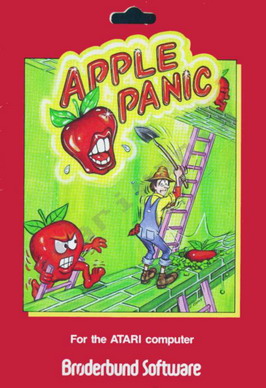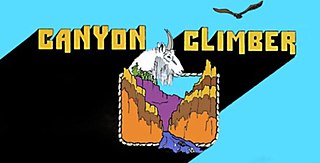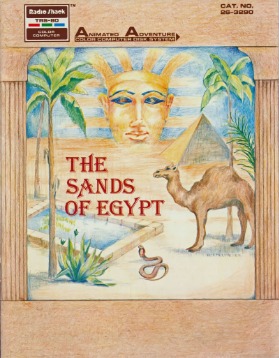
The Atari 8-bit computers, formally launched as the Atari Home Computer System, are a series of 8-bit home computers introduced by Atari, Inc. in 1979 with the Atari 400 and Atari 800. It is the first home computer architecture with coprocessors, enabling more advanced graphics and sound than most of its contemporaries. Video games are key to its software library, and the 1980 first-person space combat simulator Star Raiders is considered the platform's killer app.

Zaxxon is a scrolling shooter developed and released by Sega as an arcade video game in 1982. The player pilots a ship through heavily defended space fortresses. Japanese electronics company Ikegami Tsushinki was also involved in the game's development.

Centipede is a 1981 fixed shooter arcade video game developed and published by Atari, Inc. Designed by Dona Bailey and Ed Logg, it was one of the most commercially successful games from the golden age of arcade video games and one of the first with a significant female player base. The primary objective is to shoot all the segments of a centipede that winds down the playing field. An arcade sequel, Millipede, followed in 1982.

Star Trek is a text-based strategy video game based on the Star Trek television series (1966–69) and originally released in 1971. In the game, the player commands the USS Enterprise on a mission to hunt down and destroy an invading fleet of Klingon warships. The player travels through the 64 quadrants of the galaxy to attack enemy ships with phasers and photon torpedoes in turn-based battles and refuel at starbases. The goal is to eliminate all enemies within a random time limit.

Shamus is a shooter with light action-adventure game elements written by Cathryn Mataga and published by Synapse Software. The original Atari 8-bit computer version was released on disk and tape in 1982. According to Synapse co-founder Ihor Wolosenko, Shamus made the company famous by giving it a reputation for quality. "Funeral March of a Marionette", the theme song from Alfred Hitchcock Presents, plays on the title screen.

Apple Panic is a game for the Apple II programmed by Ben Serki and published by Broderbund Software in 1981. Apple Panic is an unauthorized version of the 1980 arcade game Space Panic, the first game with ladders and platforms. While the arcade original remained obscure, Apple Panic became a top seller for home computers. It was ported to the Atari 8-bit computers, VIC-20, IBM PC, and TRS-80.
Brian Howarth is a British video game designer and computer programmer. He wrote many interactive fiction computer games in the early 1980s in a series called Mysterious Adventures. He was born in Blackpool in 1953.

Meteor Mission II is a clone of the Taito arcade game Lunar Rescue released by Big Five Software for the TRS-80 home computer in 1982. It was written by Big Five co-founders Bill Hogue and Jeff Konyu.

Epidemic! is a turn-based strategy game in which the player stands in control of a world on the brink of extinction. It was developed by Steven Faber for the Apple II and published by Strategic Simulations in 1982. It was ported to Atari 8-bit computers.

Rear Guard is a horizontally scrolling shooter written for the Atari 8-bit family and released in December 1981 by Adventure International. Neil Larimer created the game with assistance from Sparky Starks. It was ported to the Apple II, TRS-80, and TRS-80 Color Computer.
Addictive Games was a UK video game publisher in the 1980s and early 1990s. It is best known for the Football Manager series of games created by company founder Kevin Toms. The company was originally based in Milton Keynes, England, and later relocated to Bournemouth, in southern England.

Ogre is a 1986 computer game based on the Ogre board wargame. It was released by Origin Systems for the Apple II, Amiga, Atari 8-bit family, Atari ST, Commodore 64, MS-DOS, and Macintosh.
Russ Wetmore is an American programmer and video game designer best known for writing commercial games and applications for Atari 8-bit computers in the early to mid 1980s. His Frogger-inspired Preppie! was published by Adventure International and praised by reviewers for the music and visuals. He also wrote the maze-game sequel, Preppie! II. Wetmore stopped writing games after the video game crash of 1983 and developed the integrated HomePak productivity suite for Batteries Included. He has remained in software development in director and architecture roles.

Canyon Climber is a video game designed by Steve Bjork and James Garon for the TRS-80 Color Computer and published by Tandy Corporation in 1982. Ports to other home computers were published by Datasoft. Canyon Climber is a three-screen platform game with an American Southwest theme. Two of the screens are direct analogs of those in Donkey Kong.

Galaxy Invasion is a clone of Namco's Galaxian arcade game written by Big Five Software founders Bill Hogue and Jeff Konyu for the TRS-80 16K and published in 1980. It is the first game from Big Five to include sound and music. Galaxy Invasion was followed by an enhanced version in 1982, Galaxy Invasion Plus, which includes voice.

NukeWar is a 1980 video game by Avalon Hill for the Apple II, Atari 8-bit family, Commodore 64, Commodore PET, FM-7, TRS-80, and VIC-20.

Mad Mines is a fixed shooter video game written for the TRS-80 by Yves Lempereur and published by Funsoft in 1982.

The Sands of Egypt is a 1982 graphic adventure game written by James Garon, Ralph Burris, and Steve Bjork of Datasoft for the TRS-80 Color Computer. It was licensed to Tandy Corporation and was the first disk-only game for the Color Computer sold by RadioShack. Ports to Atari 8-bit computers in 1982 and Apple II in 1983 were published by Datasoft. Set in 1893, the game follows a British explorer and archaeologist who is lost in the desert. Text commands are entered in the lower half of the screen, while a sometimes animated image of the current location is displayed in the upper half.

Clowns and Balloons is a circus-themed video game written by Frank Cohen for Atari 8-bit computers and published in 1982 by Datasoft. The game was also released for the TRS-80 Color Computer, written by Steve Bjork who had released a similar game called Space Ball for the TRS-80 in 1980. Clowns and Balloons is a clone of the 1977 arcade game Circus. A variant of Breakout, the player moves a trampoline left and right to catch a bouncing clown who pops rows of balloons at the top of the screen with his head.

















